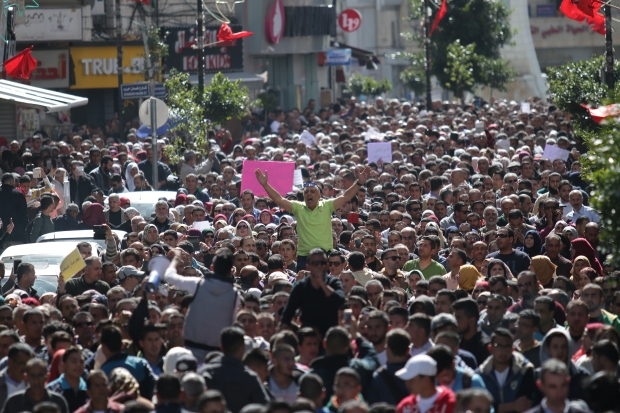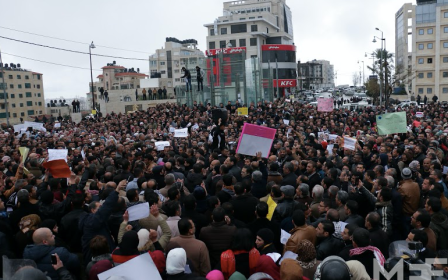Fresh strikes hit Ramallah as thousands of teachers picket PA
More than 3,000 Palestinian schoolteachers protested outside the Palestinian Prime Minister’s office in Ramallah on Monday, as a month-long teacher's strike showed no signs of abating.
The teachers, some of who managed to reach Ramallah despite extensive checkpoints being put in place by the Palestinian Authority, demanded new representatives in negotiating with the PA.
The latest developments came as teachers rejected terms laid out by members of the Palestinian Legislative Council to end the strike in an emergency meeting on Sunday.
The strikes began in February after calls rose up to implement the 2013 agreement made between the Teachers’ Union and the PA.
The agreement promised promotions and pay raises for teachers, as well as other issues such as free tuition at public universities for the children of teachers.
However, the Teachers’ Union, which belongs to the Palestinian Liberation Organisation body, has been accused of trying to sabotage the strike and work against the interests of the teachers by agreeing to settlements with the government without the consent of teachers.
At the protest, the teacher’s unfurled banners that reasserted their determination to strike for dignity and until their demands have been met.
One teacher told local news agency Maan that the union has “masterminded a conspiracy to derail the agreement”.
More than one million Palestinian children are believed to be impacted by the walk-out, which has seen some teachers stay out of classrooms day after day.
The PA has tried to stand firm, threatening to take legal action against the teachers if they do not return to work immediately.
Dozens of teachers have been arrested and interrogated before released, with some government officials such as Ahmed Suheil, the head of the union, even going as far as to paint the entire strike as a Hamas scheme to take over the West Bank.
As many as 20,000 teachers participated in a mass demonstration last month, marking one of the biggest protests against the PA in recent years.
Middle East Eye propose une couverture et une analyse indépendantes et incomparables du Moyen-Orient, de l’Afrique du Nord et d’autres régions du monde. Pour en savoir plus sur la reprise de ce contenu et les frais qui s’appliquent, veuillez remplir ce formulaire [en anglais]. Pour en savoir plus sur MEE, cliquez ici [en anglais].






